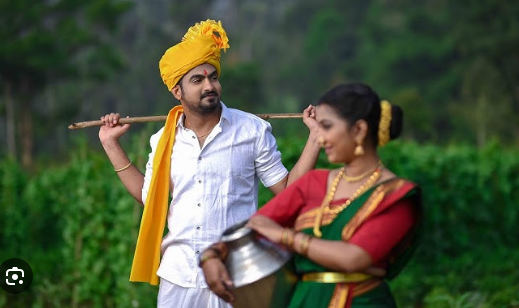“Kaleidoscope of Culture: Exploring the Traditional Dress of Karnataka for Men and Women”
Introduction:
karnataka dress karnataka dress Karnataka, a land of diverse traditions and rich heritage, boasts an array of vibrant traditional clothing that reflects the state’s unique culture. The traditional dress of Karnataka is more than just apparel; it is a representation of the state’s cultural diversity and historical significance. In this informative blog post, we will embark on a fascinating journey through the traditional clothing of Karnataka, unveiling the distinct styles for both men and women that encapsulate the essence of this beautiful region.
Mysore Silk Saree – Elegance Personified
One of Karnataka’s most famous contributions to traditional Indian clothing is the Mysore Silk saree. These sarees are renowned for their sheer elegance and exquisite craftsmanship, making them a favourite among women not only in Karnataka but across India.
[Include an image showcasing the timeless beauty of a Mysore Silk saree]
The Mysore Silk saree is characterised by its fine silk fabric, intricate zari work, and vibrant colours. It is often worn during weddings, festivals, and other special occasions. The saree drapes gracefully and embodies the quintessential essence of Karnataka’s traditional clothing.
Kodava Attire – Celebrating the Coorg Culture
The Kodava community of Karnataka has a unique traditional dress that reflects their cultural identity. Men don a distinctive attire known as ‘Kupya,’ which consists of a knee-length coat, called ‘Peeche,’ and a headdress known as ‘Pichakatti.’
[Include a picture showcasing the rich Kodava attire]
Women from the Kodava community wear a traditional saree with unique pleating and distinctive jewellery. The Kodava attire is a testament to the rich culture and history of the Coorg region in Karnataka.
Nauvari Saree – Maharashtrian Influence
In the northern part of Karnataka, especially in Belgaum and surrounding regions, the influence of neighbouring Maharashtra is prominent. Women in these areas often wear the Navari saree, which is characterised by its unique draping style.
[Include an image illustrating the elegance of the Navari saree]
The Navari saree is draped in the traditional Maharashtrian way, with pleats in the front and a pallu (the loose end of the saree) worn over the left shoulder. This saree is favoured during festive occasions and celebrations, showcasing the cross-cultural influences in Karnataka’s attire.
Dhoti – Traditional Wear for Men
Dhoti, a simple and comfortable piece of clothing, remains a popular choice for men in Karnataka, especially in rural areas. It consists of a long piece of unstitched fabric that is wrapped around the waist and tied securely.
[Include an image showcasing the simplicity and elegance of the dhoti]
The dhoti is not only traditional but also practical for the warm climate of Karnataka. It is often worn during religious ceremonies, cultural events, and everyday life, reflecting the simplicity and cultural richness of the region.
Ilkal Saree – The Pride of Ilkal
The Ilkal saree, originating from the town of Ilkal in Karnataka, is renowned for its unique weaving techniques and distinctive border patterns. These sarees are a symbol of pride for the people of the region.
[Include a picture showcasing the vibrant patterns of the Ilkal saree]
Ilkal sarees are characterised by their rich colour combinations and traditional motifs. They are often worn by women during festivals and important ceremonies, adding a touch of tradition and artistry to their attire.
Section 6: Udupi Sari – Simplicity and Grace
The coastal region of Karnataka, including Udupi, has its own traditional dress. Women here often wear the Udupi sari, a simple and elegant attire that reflects the coastal way of life.
[Include an image illustrating the grace of the Udupi sari]
The Udupi sari is typically cotton, making it comfortable for the humid coastal climate. It is adorned with minimalistic designs and is commonly worn during daily life, reflecting the region’s simplicity and cultural heritage.
Kasuti Embroidery – Artistry on Fabric
Karnataka is renowned for its Kasuti embroidery, a traditional craft that involves intricate and decorative patterns stitched onto fabric. Kasuti work is often seen on sarees and other clothing items, adding a touch of artistic elegance.
[Include a picture showcasing the exquisite Kasuti embroidery]
This embroidery technique has a history dating back centuries and continues to be an integral part of Karnataka’s traditional clothing. Kasuti embroidery reflects the artistic talents of the region and adds beauty to various apparel.
Preserving Karnataka’s Cultural Legacy
In conclusion, the traditional dress of Karnataka for both men and women is a vibrant tapestry that weaves together the state’s cultural diversity and rich heritage. From the timeless elegance of Mysore Silk sarees to the simplicity of the dhoti, these traditional garments are more than just clothing; they are a reflection of identity, tradition, and pride.
As Karnataka continues to evolve, its traditional clothing remains a testament to the enduring beauty of its cultural heritage. Whether worn during festivals, ceremonies, or everyday life, these attires connect the people of Karnataka to their roots and serve as a celebration of their rich traditions and diverse culture.
Read more “Resplendent Threads: Exploring the Elegance of Nagaland’s Traditional Dress”

